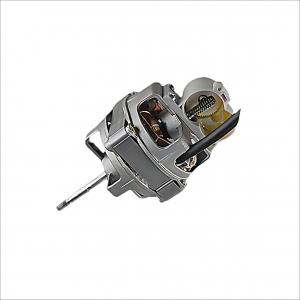

Add to Cart
Specification
Major Details
Warranty: 1-3 Years
Place of Origin: Guangdong, China
Brand Name: Go-Gold
Model Number: KG-7425M22
Usage: Home Appliance, Table Fans
Type: AC Induction Motor
Commutation: AC
Protect Feature: Totally Enclosed
Feature: High Efficiency
Product Name: Electric Fans Motor AC Motor
Motor type: AC Motor
Certification: CCC Ce RoHS
Rated Voltage: 220-240/110-120V/Custom Made
Keywords: Fans Motor
Noise: Low
Material: Cooper Wire
Sample
Application
Packaging & Delivery
Port: SHENZHEN
Lead time:
| Quantity(pieces) | 1 - 1000 | 1001 - 10000 | >10000 |
| Lead time (days) | 15 | 30 | To be negotiated |
Induction Motor, also called "asynchronous motor", is a device that places the rotor in a rotating magnetic field, obtains a rotational torque under the action of the rotating magnetic field, and thus rotates the rotor. A rotor is a rotatable conductor, usually in the shape of a squirrel cage. Invented by electrical engineer Nikola Tesla in 1887. The entry introduces the concept, inventor, working principle, basic structure, working mode, braking mode, asynchronous characteristics, specifications, and fault inspection of induction motors.
A rotor is a rotatable conductor, usually in the shape of a squirrel cage. Invented by electrical engineer Nikola Tesla in 1887. The entry introduces the concept, inventor, working principle, basic structure, working mode, braking mode, asynchronous characteristics, specifications, and fault inspection of induction motors.
Operational Principle
The relative motion between the rotating magnetic field generated
by the stator (with a synchronous speed n1) and the rotor winding
causes the rotor winding to cut magnetic induction lines and
generate induced electromotive force, thereby generating induced
current in the rotor winding. The induced current in the rotor
winding interacts with the magnetic field to generate
electromagnetic torque, causing the rotor to rotate. As the rotor
speed gradually approaches the synchronous speed, the induced
current gradually decreases, and the resulting electromagnetic
torque also decreases accordingly. When the asynchronous motor
operates in the motor state, the rotor speed is lower than the
synchronous speed. To describe the difference between rotor speed n
and synchronous speed n1, slip rate (slip) is introduced.
Asynchronous Functions
1. Generally speaking, small asynchronous motors refer to induction-operated asynchronous motors. This type of motor uses auxiliary coils and capacitors not only during starting, but also during operation. Although the starting torque is not very high, its structure is simple, reliable and efficient.
2. The rated speed of the motor will also change with the size of
the load.
3. Can run continuously.
4. Used in applications that do not require speed braking.
5. Use Class E insulation grade, while UL motors use Class A
insulation grade.
6. There are two types of induction conversion: single-phase
asynchronous motor and three-phase asynchronous motor.
7. The single-phase motor is an asynchronous induction motor with
high efficiency and low noise.
8. When a single-phase asynchronous motor is running, it will
generate torque in the opposite direction of rotation, so it is
impossible to change the direction in a short time. After the motor
comes to a complete stop, its direction of rotation should be
changed.
9. The power supplies of single-phase motors include A (110V 60Hz),
B (22V 60Hz), C (100V 50/60Hz), D (200V 50/60Hz), E (115V 60Hz) and
X (200-240V 50Hz), etc.
10. The three-phase motor uses asynchronous motors with U (200V
50/60Hz), T (220V 50/60Hz) and S (380-440V 50/60Hz) power supplies.
